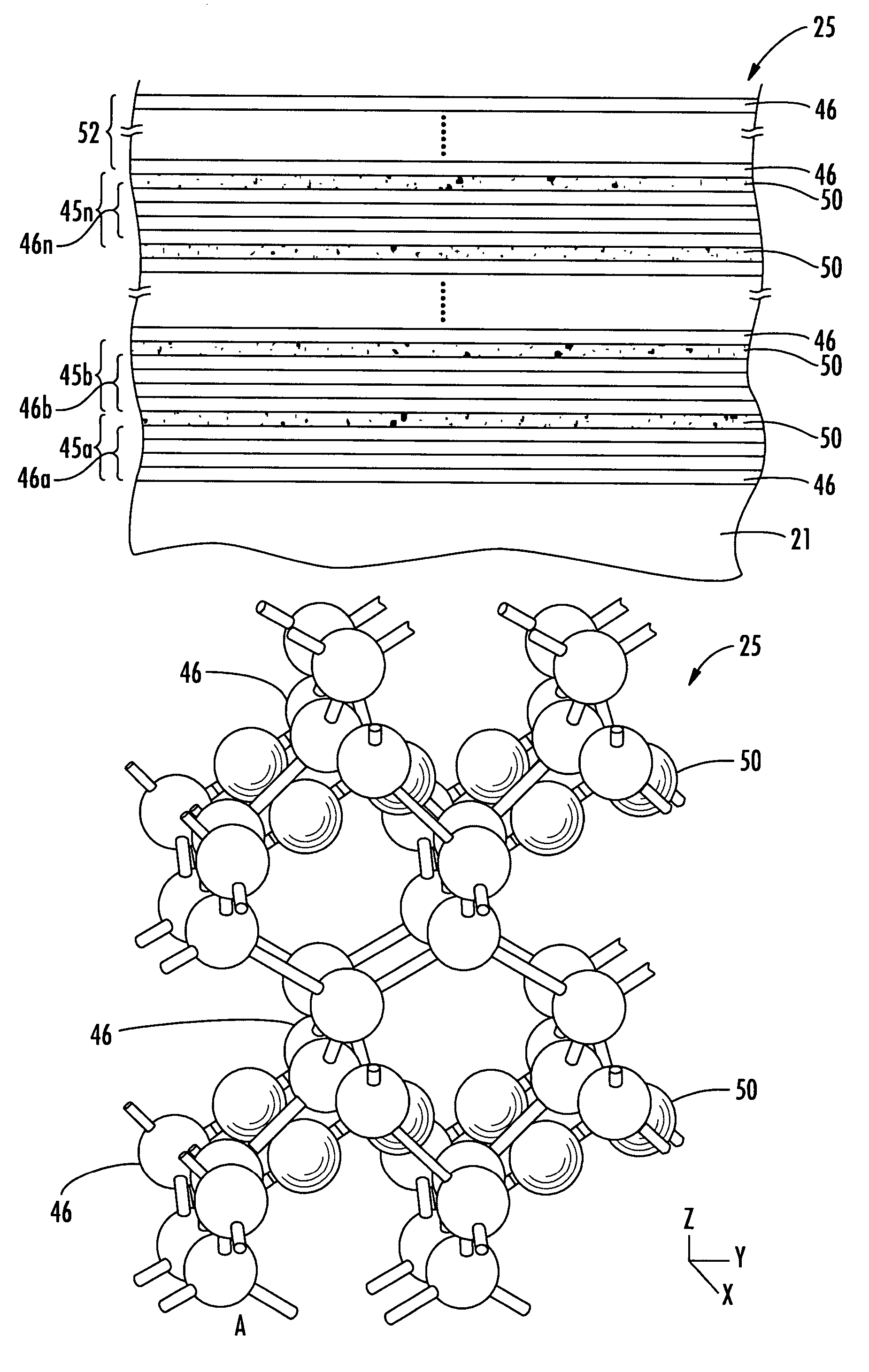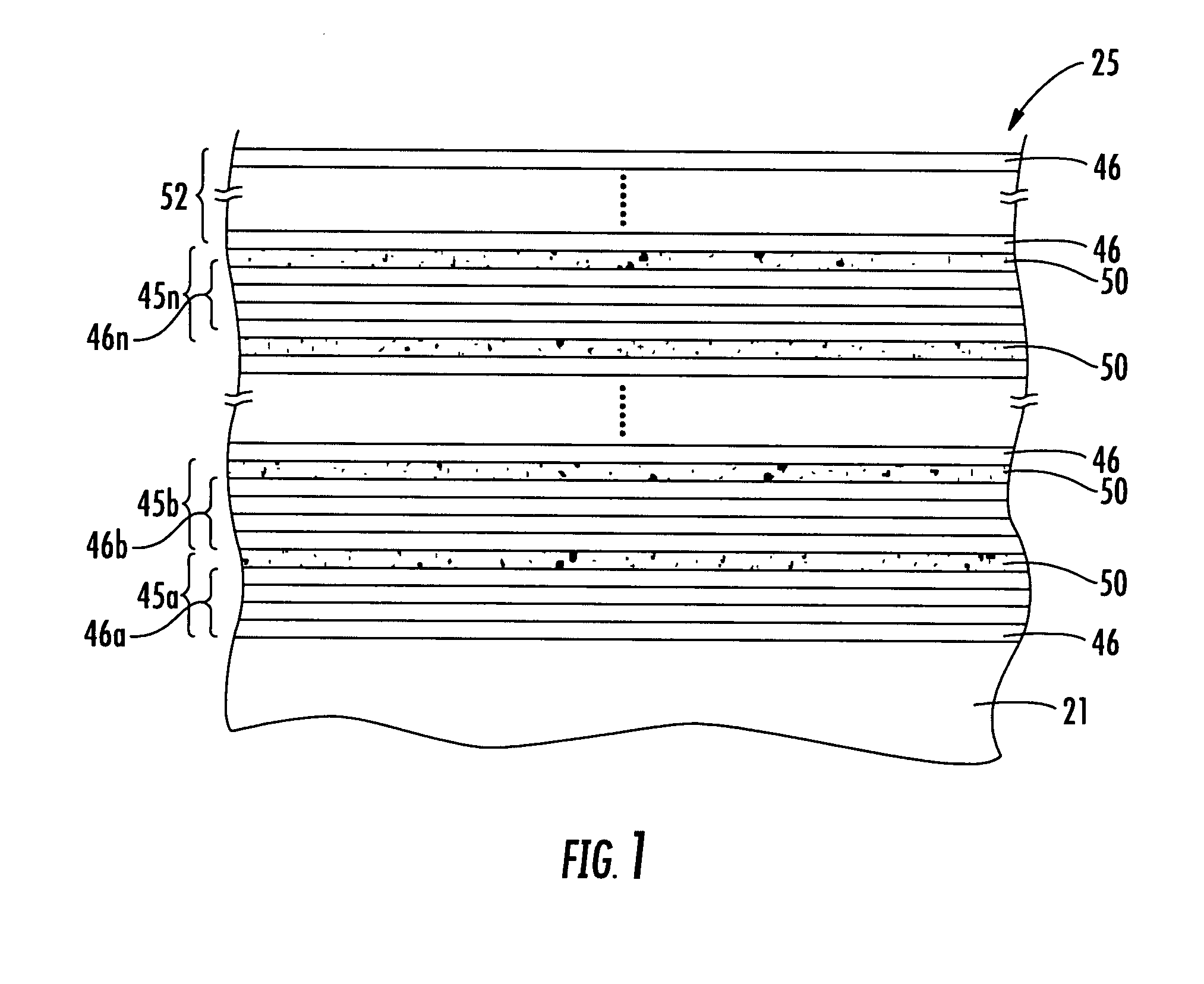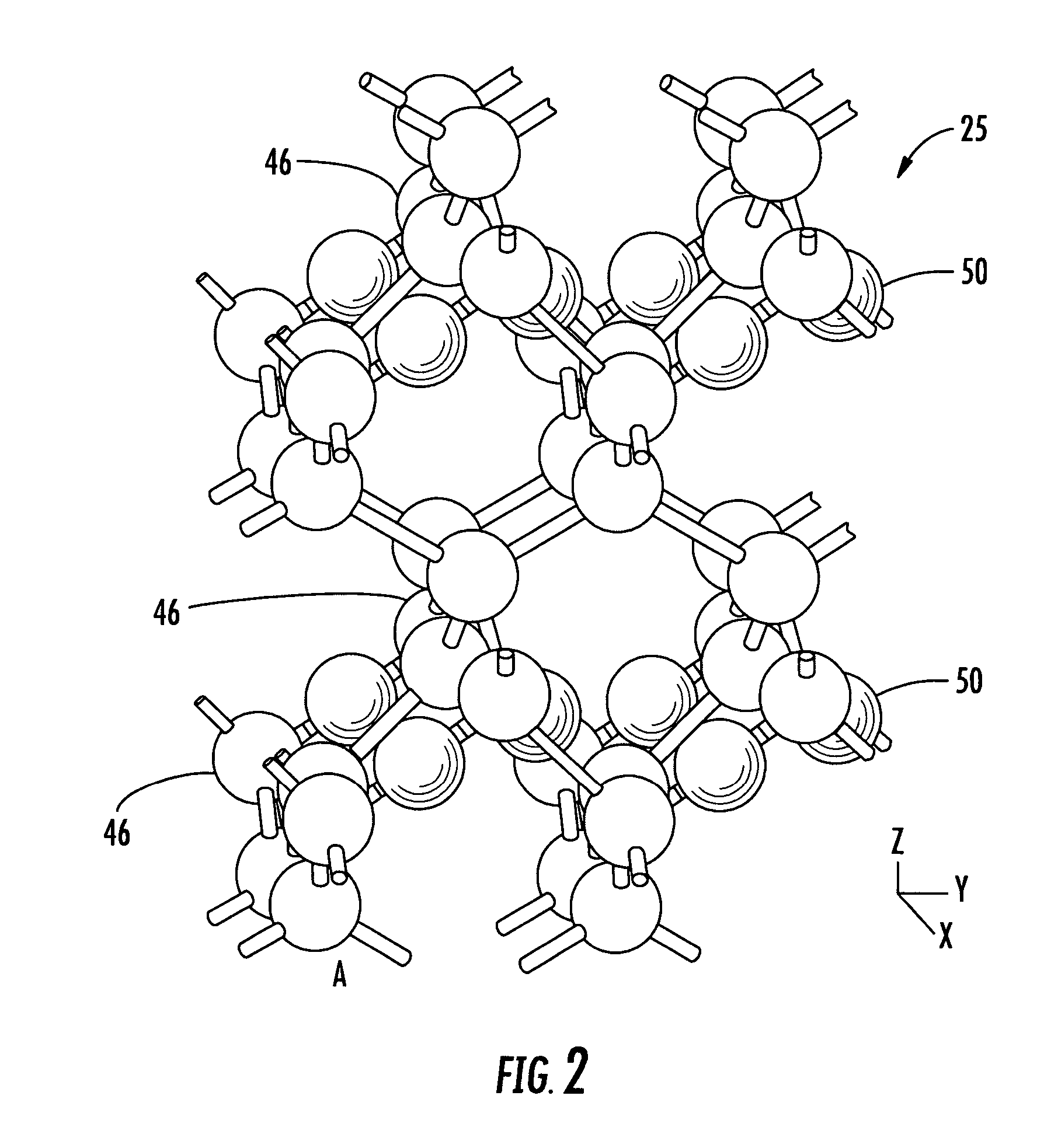Method for making an electronic device including a poled superlattice having a net electrical dipole moment
a superlattice and net electrical dipole moment technology, applied in piezoelectric/electrostrictive devices, device materials, piezoelectric/electrostrictive/magnetostrictive devices, etc., can solve the problem of polarization hysteresis characteristic degrading with increasing cycles, pzt ceramics have fallen out of favor in many commercial applications and materials, and drawbacks associated
- Summary
- Abstract
- Description
- Claims
- Application Information
AI Technical Summary
Benefits of technology
Problems solved by technology
Method used
Image
Examples
Embodiment Construction
[0062]The present invention will now be described more fully hereinafter with reference to the accompanying drawings, in which preferred embodiments of the invention are shown. This invention may, however, be embodied in many different forms and should not be construed as limited to the embodiments set forth herein. Rather, these embodiments are provided so that this disclosure will be thorough and complete, and will fully convey the scope of the invention to those skilled in the art. Like numbers refer to like elements throughout, and prime notation is used to indicate similar elements in different embodiments.
[0063]The present invention relates to controlling the properties of semiconductor materials at the atomic or molecular level. Further, the invention relates to the identification, creation, and use of improved materials for use in semiconductor devices.
[0064]Applicants theorize, without wishing to be bound thereto, that certain superlattices as described herein reduce the ef...
PUM
 Login to View More
Login to View More Abstract
Description
Claims
Application Information
 Login to View More
Login to View More - R&D
- Intellectual Property
- Life Sciences
- Materials
- Tech Scout
- Unparalleled Data Quality
- Higher Quality Content
- 60% Fewer Hallucinations
Browse by: Latest US Patents, China's latest patents, Technical Efficacy Thesaurus, Application Domain, Technology Topic, Popular Technical Reports.
© 2025 PatSnap. All rights reserved.Legal|Privacy policy|Modern Slavery Act Transparency Statement|Sitemap|About US| Contact US: help@patsnap.com



